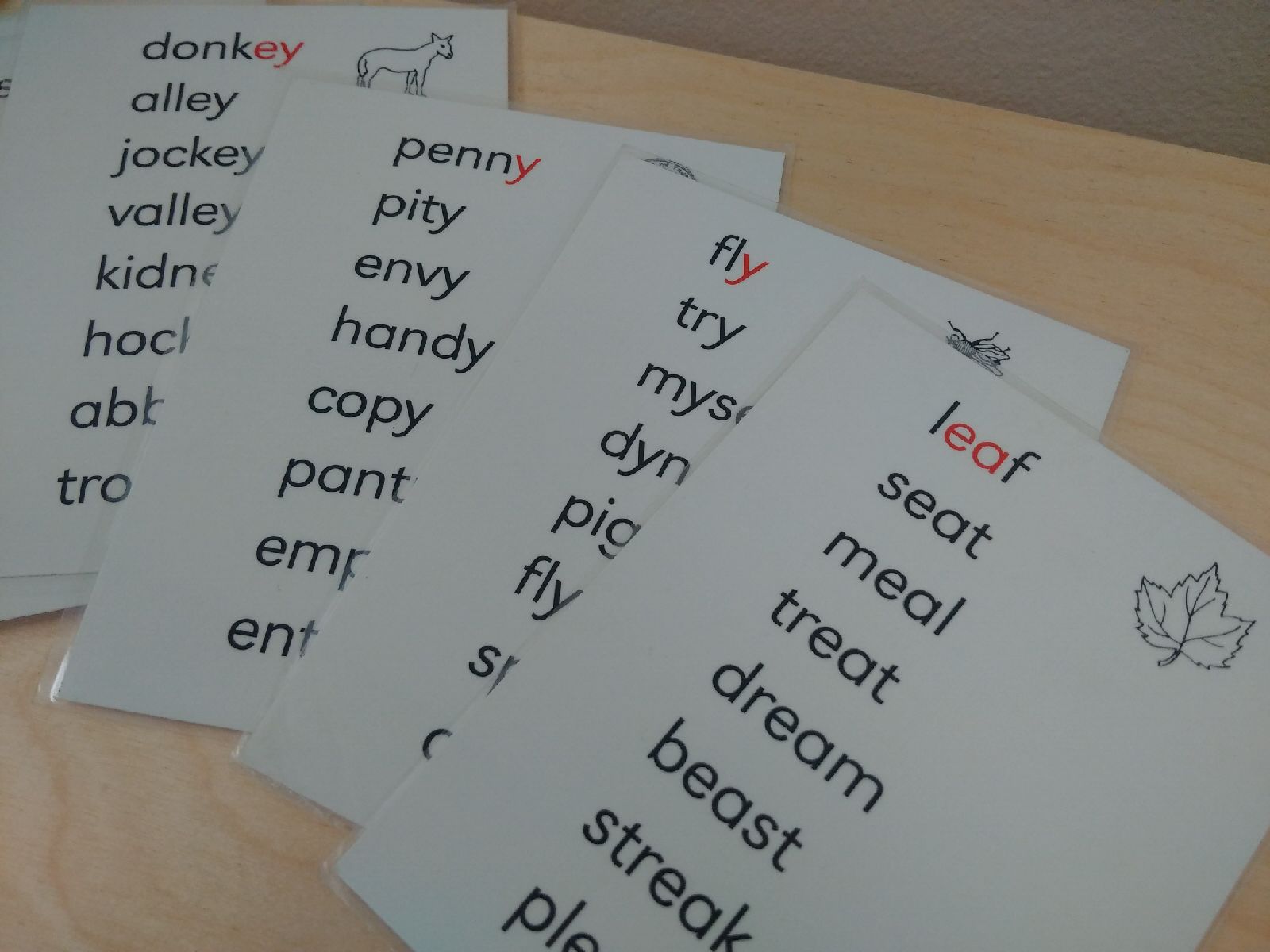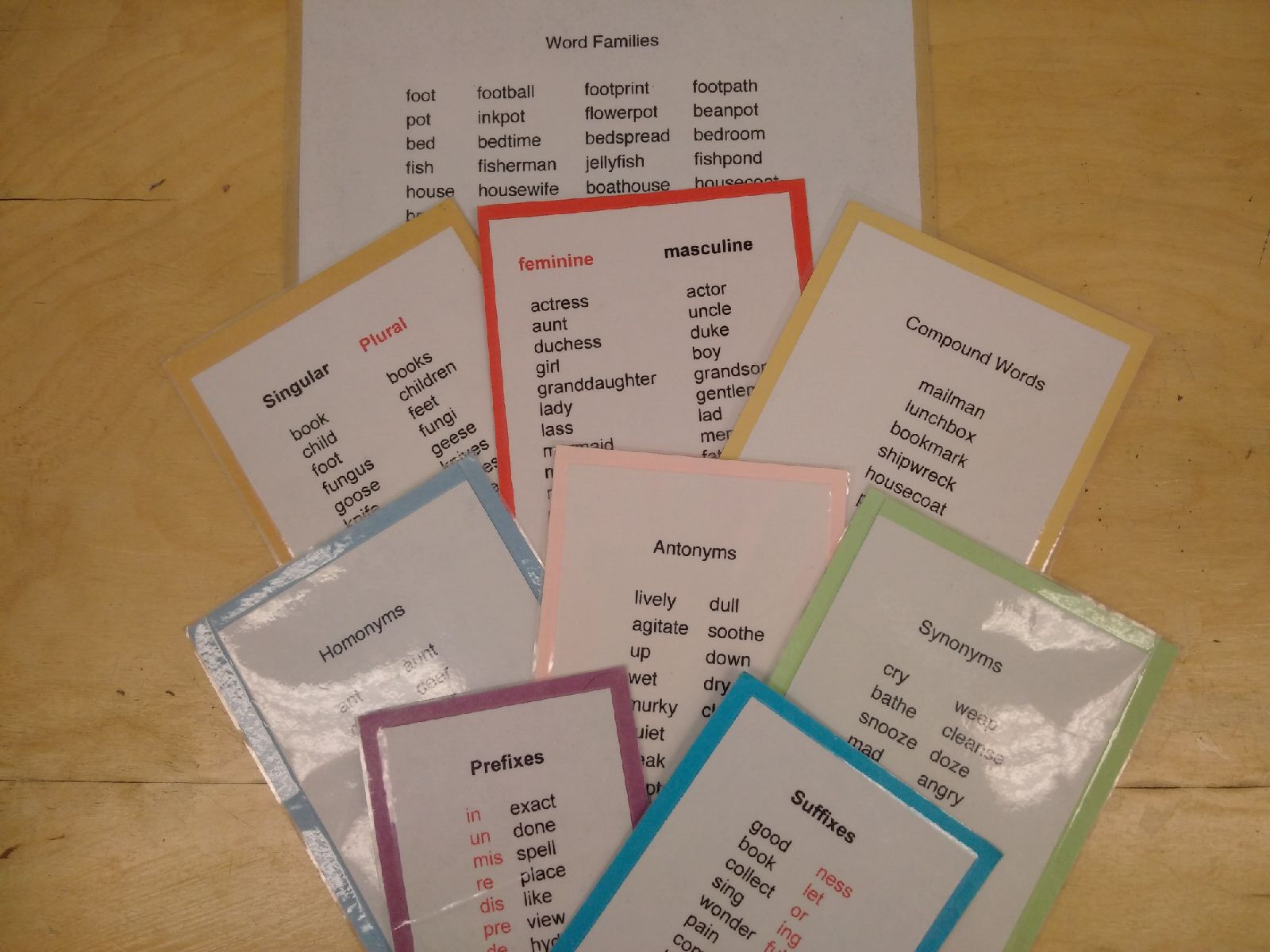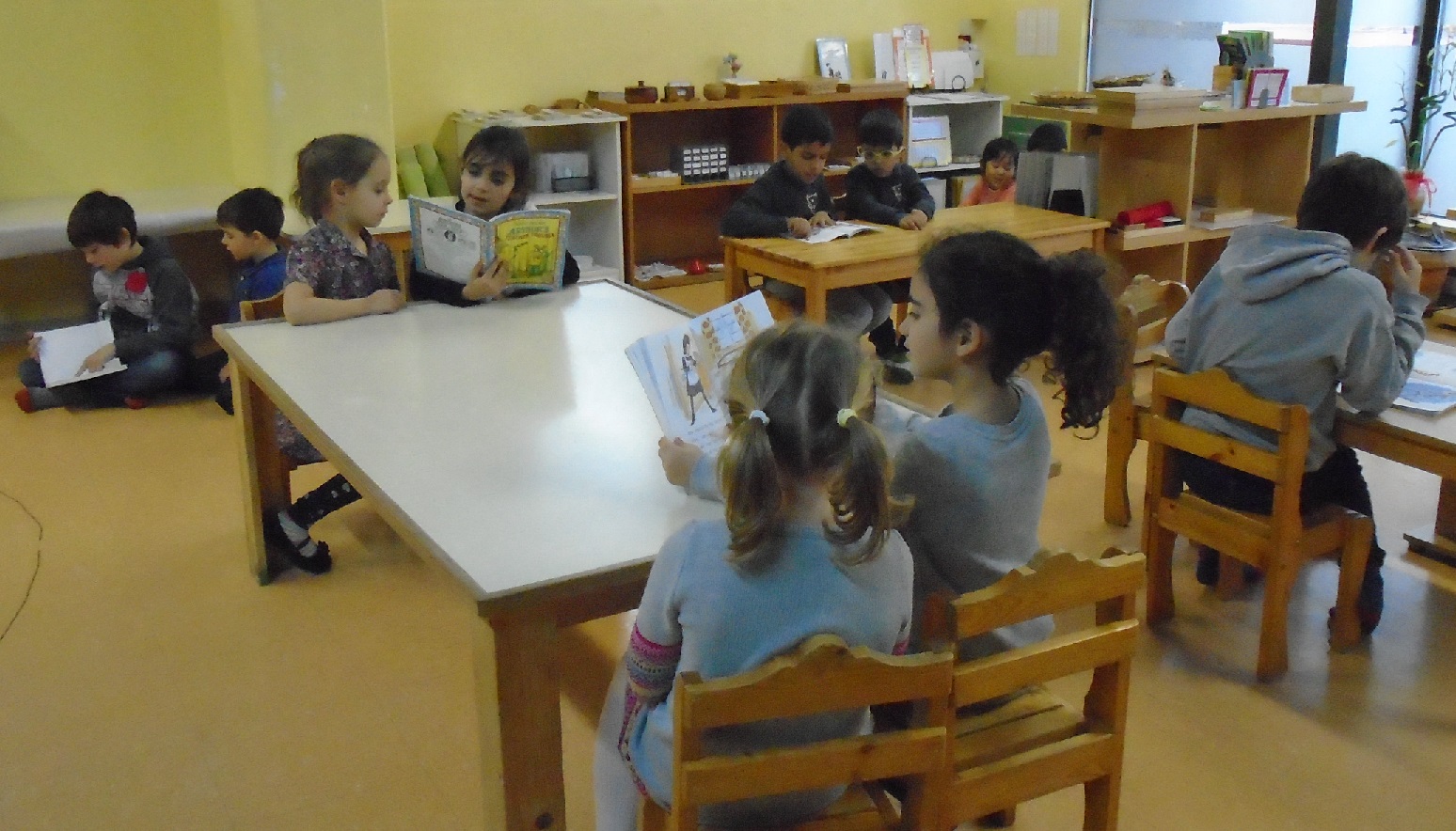Though it is a dedicated area in the environment, language is woven throughout your child’s experience long before she will ever use the formal Montessori Language materials.
Dr Montessori recognized that children under the age of 6 are going through what she coined a “sensitive period” towards the acquisition of language. They show a true affinity towards language and are observed to be specifically drawn to the human voice, especially their own mother’s voice. At this time, children have a very strong ability to take in and retain new information related to language. For example, they love big words and are enthralled with learning new songs and stories, which they pick up with great ease. We aim to make the most of this time while the child experiences effortless and joyful learning.
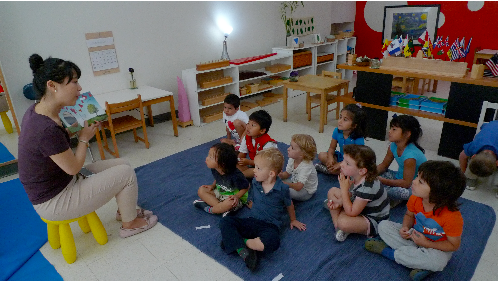 During this sensitive period towards language, the child goes through three explosions, or identifiable peaks, in their development of language. The first is an explosion into spoken language, which occurs around two years of age; the second is into written language, around 4 to 4.5 years old; and finally into reading around age 5. Dr Montessori understood that children respond to materials that engage each sensitive period when presented at the right time in their individual development. All children will reach these peaks in their own time. These age parameters are just to provide a general idea.
During this sensitive period towards language, the child goes through three explosions, or identifiable peaks, in their development of language. The first is an explosion into spoken language, which occurs around two years of age; the second is into written language, around 4 to 4.5 years old; and finally into reading around age 5. Dr Montessori understood that children respond to materials that engage each sensitive period when presented at the right time in their individual development. All children will reach these peaks in their own time. These age parameters are just to provide a general idea.
In essence, language is communication, and we begin of course, with Spoken Language, the foundation of this area. Spoken Language “lessons” begin from the moment the children enter the environment. This is done with a greeting at the door, which is the first Grace & Courtesy lesson. Grace & Courtesy is built on the idea that children are looking for the “how to’s” of our society. We help them to build their own community by giving short lessons and providing role playing opportunities to learn everything from “how to ask someone not to observe” to “how to make room for someone to pass” to “how to give compliments”. The children love the opportunity to role play and soon after, you can hear the difference these verbal tools really make!
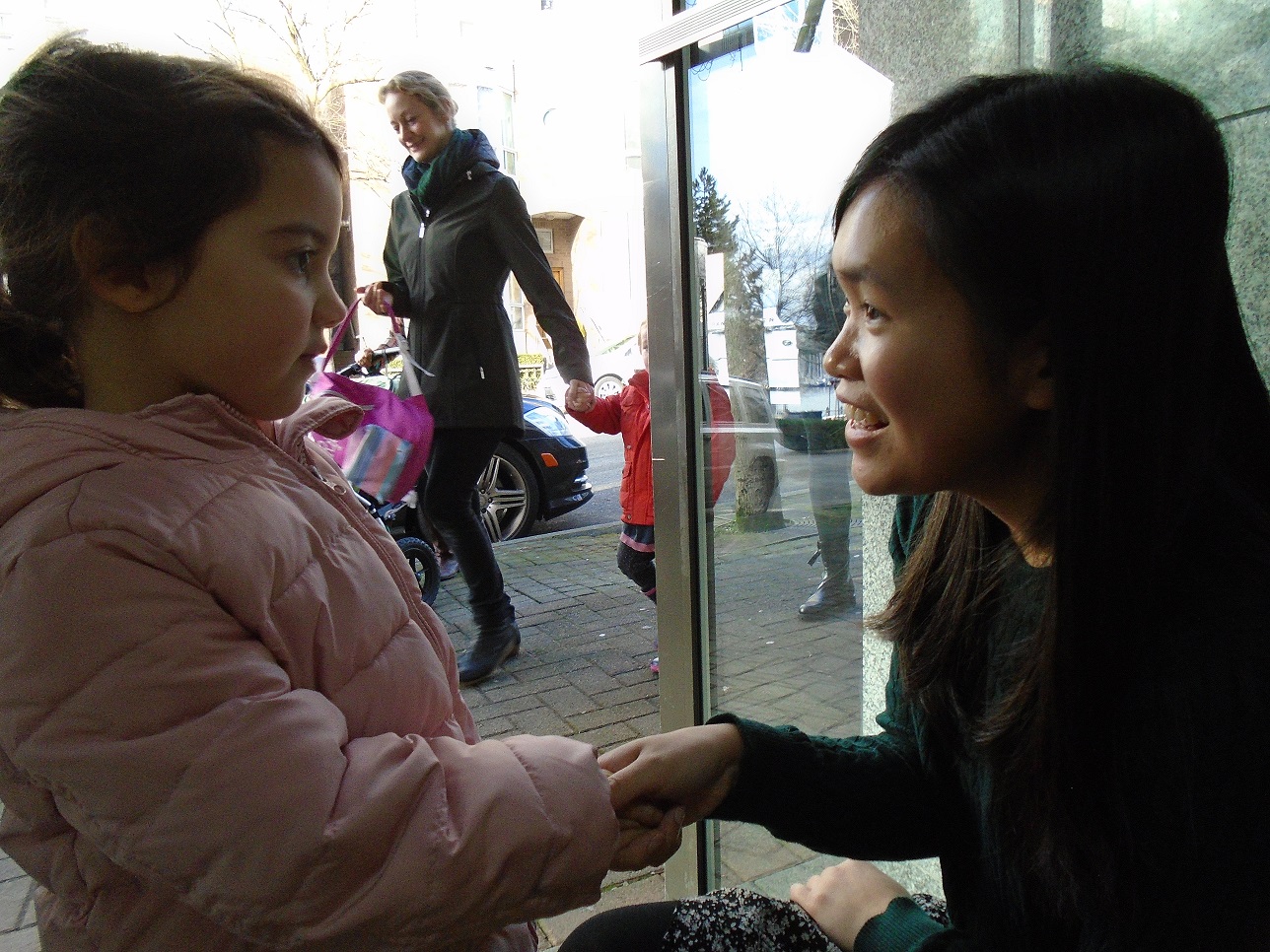 We provide Vocabulary throughout their experience, as we introduce areas of the environment, names of materials, names of objects in the environment, basically anything the child can touch or use has a proper name and we ensure to name it for them. Other vocabulary given includes names of qualities of the Sensorial material, given by way of a three-period lesson. Names of the classified cards provide classification, vocabulary from a theme, such as “items in the kitchen.”
We provide Vocabulary throughout their experience, as we introduce areas of the environment, names of materials, names of objects in the environment, basically anything the child can touch or use has a proper name and we ensure to name it for them. Other vocabulary given includes names of qualities of the Sensorial material, given by way of a three-period lesson. Names of the classified cards provide classification, vocabulary from a theme, such as “items in the kitchen.”
Spoken Language also includes “Language Training” which builds a love for language through Stories, songs, poems, finger plays, question games, oral composition, and conversation. Finally, Sound Games are used to help children begin to recognize that words are made up of sounds. We present a set number of objects in the lesson and ask children to identify the beginning, ending or middle sounds of the words as their understanding develops.
Through her observations, Dr Montessori recognized that children are ready to write before they are able to read, as breaking down one’s own words into component sounds are easier than the synthesis that is needed in reading to sound something out and come up with the word and meaning intended. Written language begins with the Sandpaper Letters, building the child’s first visual and tactile experience with the sounds explored in the sound games. We work with the cursive alphabet given Dr Montessori’s observations of young children’s inherent scribbling in a curvilinear fashion. (Print is introduced and used within reading activities.) In most cases, we do not need to directly teach the print alphabet, as children learn this mostly through their exposure to print.
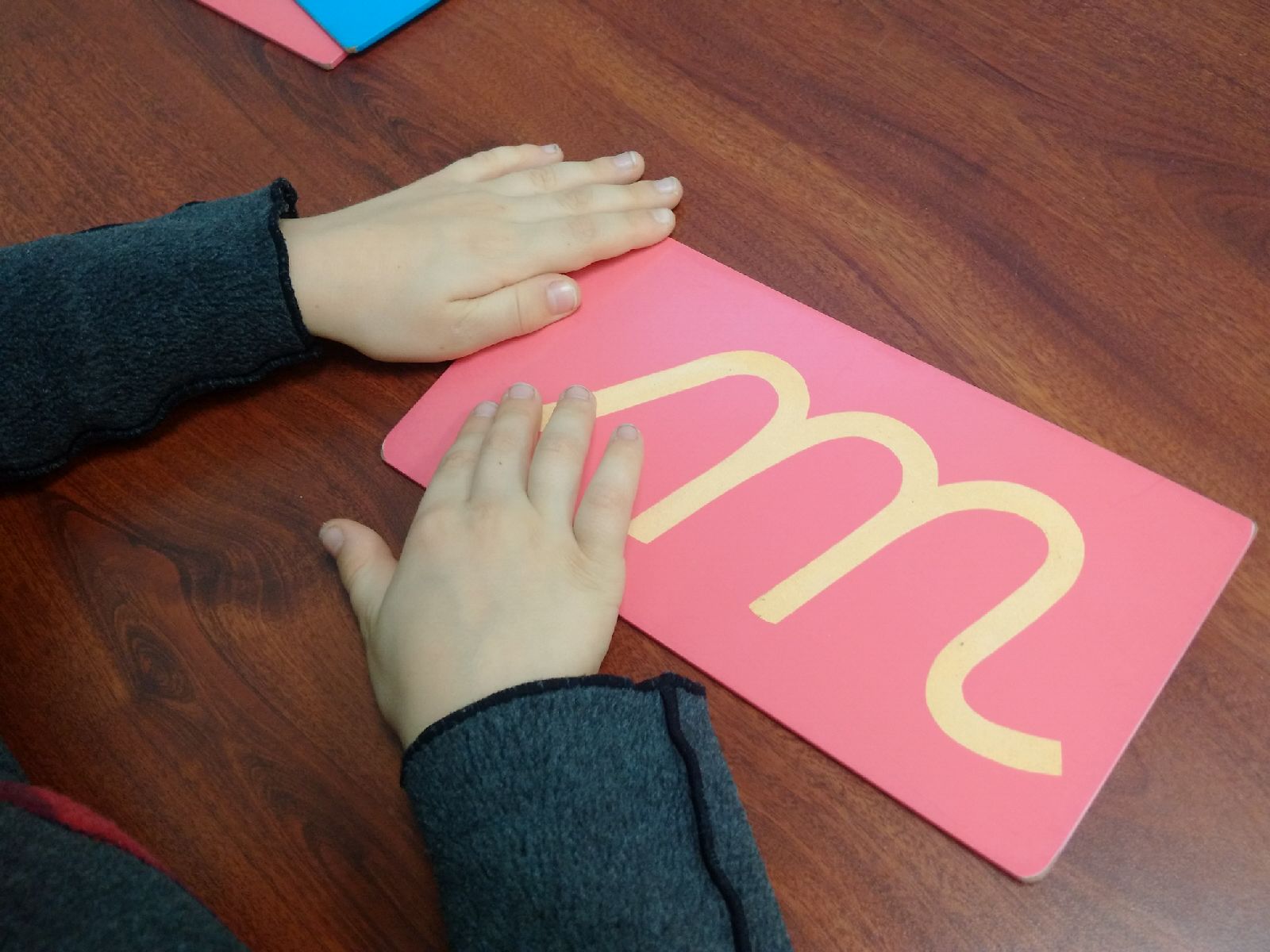 Once your child knows at least half of the sounds and symbols, we introduce the Movable Alphabet. With this, children are able to express thoughts and ideas with symbols before they are physically able to write themselves. Dr Montessori noted that the mind is able to write before the hand has reached the development necessary. The Movable Alphabet makes the exploration into writing possible without the pencil.
Once your child knows at least half of the sounds and symbols, we introduce the Movable Alphabet. With this, children are able to express thoughts and ideas with symbols before they are physically able to write themselves. Dr Montessori noted that the mind is able to write before the hand has reached the development necessary. The Movable Alphabet makes the exploration into writing possible without the pencil.
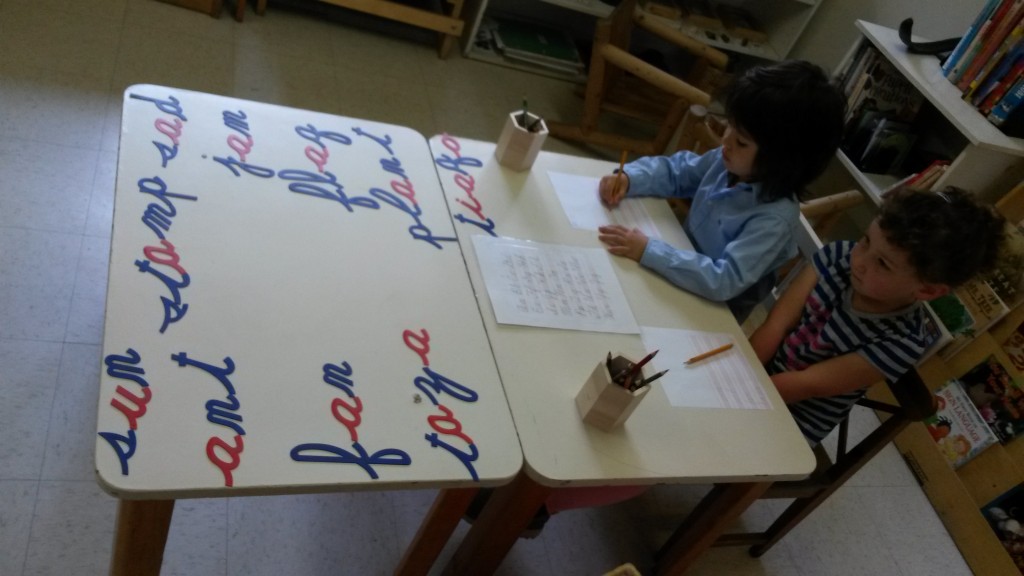 Writing requires many indirect preparations long before your child is introduced to materials in the language area. For example, the polishing wood exercise found in our Practical Life materials, includes many manual preparations such as applying the oil from left to right, top to bottom and in a semicircular motion. Further, the sequence of these prior activities helps to build logic and sequence within the child’s mind, which helps with the order required for language, as writing requires syntax or grammar, the correct ordering of sounds, words, and phrases in order to be comprehensible to the reader. Other manual preparations include lightness of touch, staying within limits, following a contour, and developing the pincer grip.
Writing requires many indirect preparations long before your child is introduced to materials in the language area. For example, the polishing wood exercise found in our Practical Life materials, includes many manual preparations such as applying the oil from left to right, top to bottom and in a semicircular motion. Further, the sequence of these prior activities helps to build logic and sequence within the child’s mind, which helps with the order required for language, as writing requires syntax or grammar, the correct ordering of sounds, words, and phrases in order to be comprehensible to the reader. Other manual preparations include lightness of touch, staying within limits, following a contour, and developing the pincer grip.
All of these physical preparations come together in the Metal Insets material, which was presented on the night of our workshop. In this exercise, the child works to hold the stencil steady, trace around and within it, using a correctly held pencil and colouring within the shapes that are created using a soft stroke moving from left to right. There are seven stages to this material offering several ways to create beautiful designs while practicing the skills needed for strong penmanship.
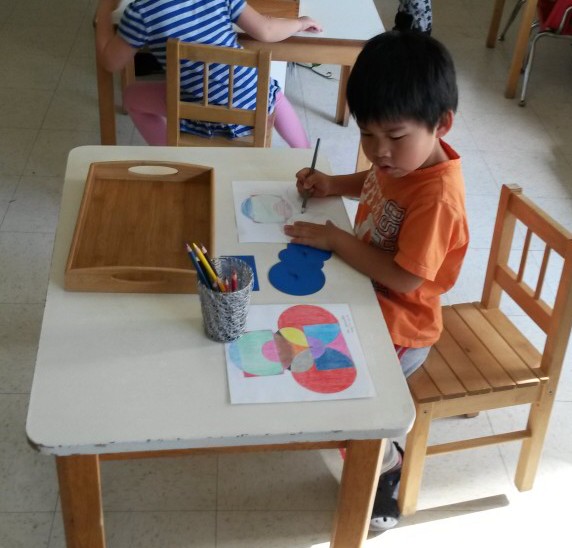 The process of handwriting begins with a chalkboard, moving to writing on a line, between lines and finally on paper, following a similar process of introducing lines. The length of this process varies depending on the child.
The process of handwriting begins with a chalkboard, moving to writing on a line, between lines and finally on paper, following a similar process of introducing lines. The length of this process varies depending on the child.
What is interesting at this stage is that even though a child is able to write her thoughts using either a pencil or the moveable alphabet, it is likely that she will may be able to read it all back to us if asked. However, after some time of practice with these materials, and almost spontaneously, the child will look at a word she or another child has written and read it out! At this time, we see the child is ready to be introduced to the aspects of reading. Writing from here on is presented and used in parallel to the reading activities.
Reading is basically being able to decipher and understand a written message of another. It starts with mechanical reading where the child is able to sound out and link the various letters into words. The child does not fully grasp the intention or emotions passed on by the author, but is able to read the words on the page. From here, the child will eventually move towards total reading where the reader understands everything that the author wants to convey.
Our reading exercises begin with the phonetic object box, where our philosophy of using concrete materials to develop understanding is put to use. We also have a phonogram object box to introduce the concept of phonograms to the children, where two sounds placed together create an entirely different sound. In puzzle words children are introduced to words that cannot be sounded out, such as “I” and “the”, where no rules are followed. The child is also introduced to reading classification exercises which include things like labeling the environment, using the classified cards with labels, and exploring scientific vocabulary through definition booklets.
Once children are easily reading, we move towards further exploring reading through activities like Word Study, looking at how words relate to each other, such as homonyms, antonyms, synonyms, plurals, and compound words. The Function of Words is introduced, giving children the opportunity to explore the article, noun, adjective, verb, etc. and symbolize these within a phrase or sentence. Advanced materials such as Reading Analysis offers children a further understanding of what they have read. The child, when using these materials becomes conscious of the change in style or meaning when words are moved around. Through each of these, the child develops a deeper understanding of syntax.
Interpretive Reading exercises are also used to help the child explore the meaning of text with the opportunity to dramatize what is read. This, along with other informal language lessons such as regular read-alouds leads children towards an appreciation for language beyond the dry understanding of words. In short, our environment is one that engages and delights the child through creative expressions with language in conversation, wordplay, songs, literature, drama and of course, the formal Montessori Language lessons.
© Lions Gate Montessori


